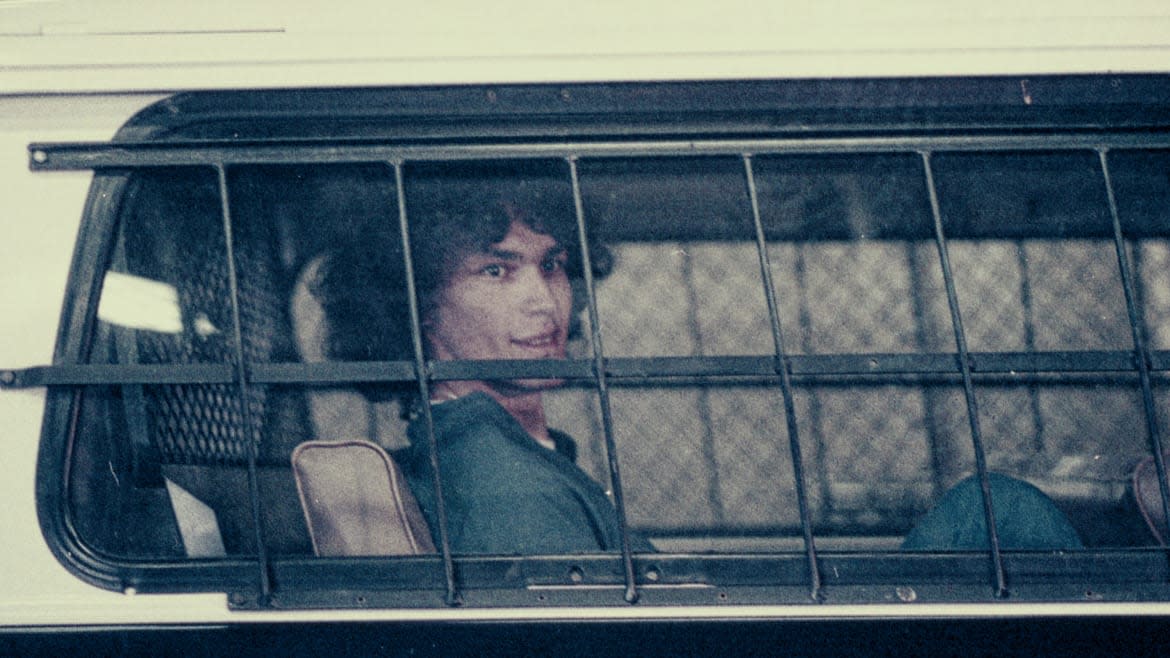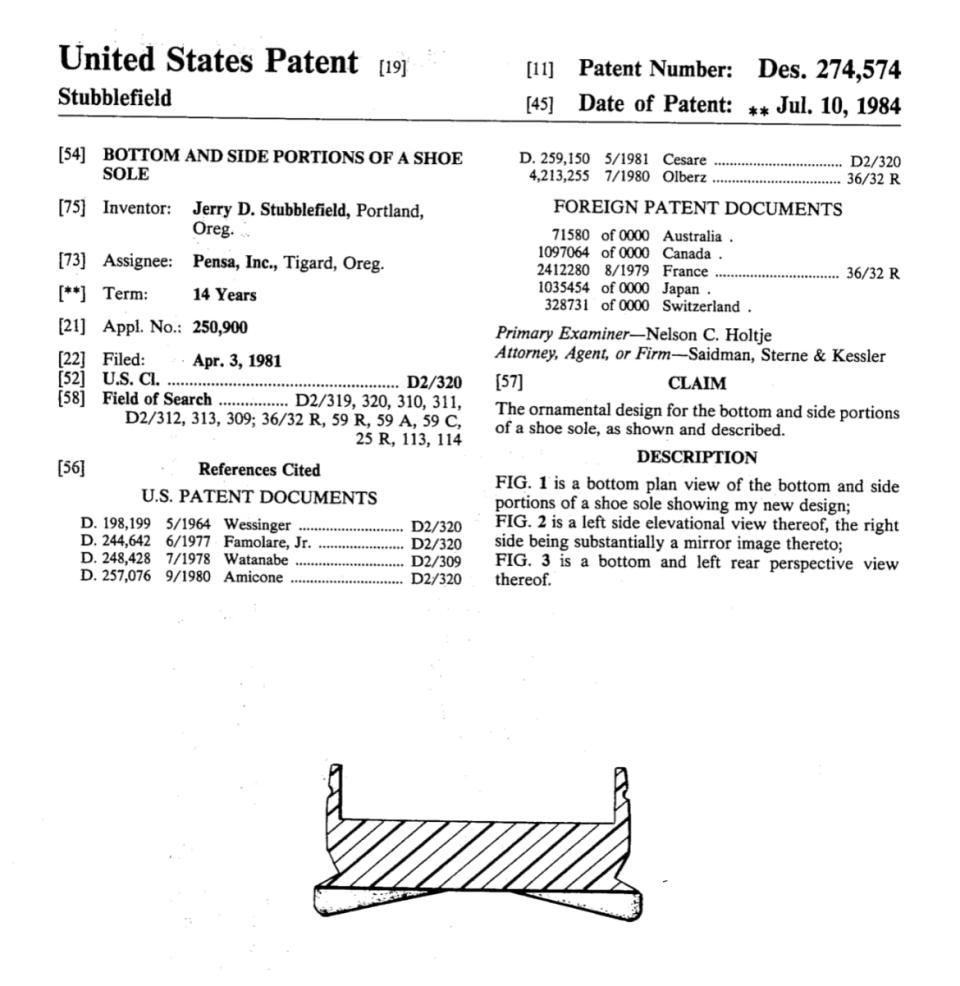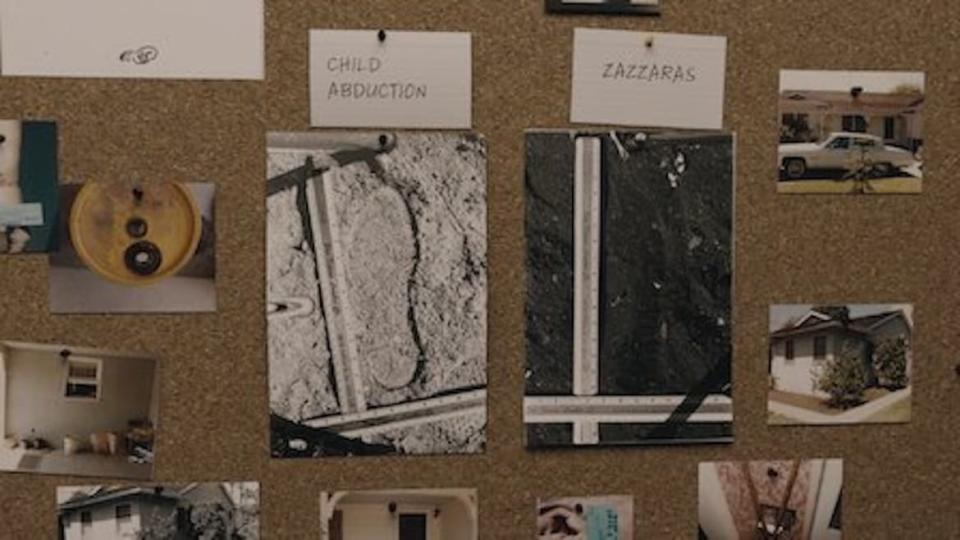The Tale of a Shoe, My Father, and the Night Stalker

March 5, 2018, was a predictably busy Monday at The Intellectual Property Corporation, the production company I co-founded and where I serve as president. I had seven meetings that day, but the one that caught my eye was a 4:30 p.m. sit-down noted in my calendar as “Night Stalker Homicide Detectives + Tiller.” Tiller is director Tiller Russell, with whom my producing partner and I have been working for a decade now, beginning with the documentary feature The Seven Five. That afternoon, Tiller walked into our offices with legendary Los Angeles homicide detectives Frank Salerno and Gil Carrillo, who told us the harrowing tale of their pursuit of the serial murderer known as the Night Stalker. I hung on their every word. But when they got to the part of the story about how a shoe print from a slightly obscure brand called Avia became the most significant piece of evidence in the entire case, I was stunned. For me, this revelation seemed almost inconceivable. Almost too coincidental. The world is small, but it cannot possibly be that small. Could it?
Avia was an upstart athletic shoe company in the 1980s. And they had very distinct shoe soles; so distinct, in fact, that a patent attorney had secured design patents for them so they would be protected against other brands that may want to copy their designs. These Avia shoe soles were called “cantilever soles.” This same patent attorney had obtained a design patent on the very sole of the shoe that the detectives were now describing to me as the pivotal clue that linked the Night Stalker’s murders to each other. As it so happens, this patent attorney is my father, Perry Saidman.

As serial murderers go, Richard Ramirez, AKA the Night Stalker, was particularly frightening. That’s quite a distinction within the gruesome and horrifically evil canon of serial killers. But this is due to Ramirez’s seeming lack of a modus operandi. He killed the young and the old, men and women, sometimes raping the women, sometimes not. He abducted and molested children but did not typically kill them. He used a wide variety of weapons. He shot people, but sometimes stabbed them to death. In certain instances, he used a tire iron, or a hammer, or a machete. Sometimes he beat his victims with his bare hands. The apparent randomness of his violence made him all the more terrifying. It also made him very hard to catch. Initially, it was simply hard to connect his murders together and to prove that they were being committed by the same individual.
Gil Carrillo was a rookie homicide detective when the Night Stalker case landed in his lap. In fact, he was the youngest homicide detective on the force. And yet, it was Carrillo who developed the controversial theory that these murders and assaults were being committed by the same man. For a while, not many took him seriously. But when the distinctive Avia shoe print started showing up at various crime scenes, there was finally an actual, bona fide, tangible clue that made it clear these crimes were part of a series and were the work of a single person. Carrillo’s theory was vindicated. And the hunt for the Night Stalker was on.
Throughout our limited documentary series Night Stalker: The Hunt for a Serial Killer, that Avia shoe print pops up time and time again, coming as close to a supporting character in the story as an inanimate object can. The print was at the scene of the murders of Maxine and Vincent Zazzara. It was found in the flower beds outside Lorraine and John Rodriguez’s home. When Mabel Bell was murdered, there was an alarm clock found on the floor, and on that alarm clock was part of that same shoe print. When Max and Lela Kneiding were murdered, there was a perfectly intact Avia shoe print on the porch and on the step up into the living room. When Joyce Nelson was murdered, Ramirez leaves this same shoe print on her face after what was clearly a brutal and vicious attack. At least eight murders were connected by these shoe prints and tie the crimes to the same killer. And this shoe print even made an appearance in the case of an abducted child, which helped link a string of child abductions together with the murders. In an era of pre-DNA crime solving, one cannot underestimate the significance of this one, and very distinct, Avia shoe print. As Detective Salerno notes in our documentary, “That Avia was a very uncommon shoe.”
The Avia shoe print was such a valued piece of evidence in the Night Stalker case that when local L.A. reporters got wind of its existence, the detectives had to broker a deal with them to prevent its reporting on the nightly news. Tragically, the shoe print evidence was ultimately revealed to the public by then mayor of San Francisco Diane Feinstein, to the great shock and anger of Detectives Carrillo and Salerno.

Of course, as a 10-year-old child in 1985, I had no idea any of this was going on. But I was fully aware of how important my father’s representation of Avia was throughout my childhood. I remember my dad bringing home samples of Avia’s latest designs. And I remember learning how rare design patents were back then. Most patents were utility patents that protect functional features, as opposed to design patents that protect appearance features. My father helped pave the way for brands to protect themselves based on how their designs looked. He worked closely with Avia’s creator, Jerry Stubblefield, a name I often heard as a young boy growing up.
Carrillo and Salerno found themselves working with Stubblefield, too. With Stubblefield’s help, they were able to determine the exact model of Avia shoe the killer was wearing. The detectives knew from surviving witness testimony that the shoes were the color black. And they knew from the evidence at various crime scenes that it was a size eleven and a half. They learned from Stubblefield that 1,356 pairs of the model in question had shipped from Taiwan for distribution in the United States. Of these, there were only six black pairs in a size eleven and a half. Five of those six pairs were shipped to Arizona. Astonishingly, only one single pair was sent to Los Angeles, and that was the pair Ramirez wore. It’s unlikely Ramirez realized he was wearing shoes with an incredibly distinct and rare sole design. If he had, perhaps he would have chosen more generic footwear.
But the Avia designs did not remain rare for long. Competitor LA Gear later copied the designs of another Avia shoe sole, and when they refused to back down or pay damages, my father sued LA Gear for design patent infringement, in federal court, on behalf of his client. It’s worth noting that patent attorneys rarely end up in court. But this case did. And my dad and Avia won. It was a landmark victory for the advancement of design patents as legitimate protection against would-be copycats. And it was a career-making case for my father.
Three years ago this month, I sat in our offices listening to the detectives tell the story of how they tracked down and helped bring the Night Stalker to justice in the mid-1980s. And the warm feelings of my dad’s professional achievements from that era came flooding back. In an instant. Thirty-some years later, his son would, in a wholly unexpected way, continue to tell the story.
Night Stalker: The Hunt for a Serial Killer can currently be streamed on Netflix. The limited documentary series is directed by Tiller Russell, and executive produced by Tiller Russell, Tim Walsh, and Aaron Saidman & Eli Holzman of Industrial Media’s The Intellectual Property Corporation (IPC).
Get our top stories in your inbox every day. Sign up now!
Daily Beast Membership: Beast Inside goes deeper on the stories that matter to you. Learn more.

